A couple of days ago, I told you that I visited El Calvario Park for the first time, even though I have lived in Caracas for most of my life. In the first part of my visit, I told you, among other things, about El Parnaso. A beautiful French-style garden, also known as the Plaza de Los Enamorados (The Lovers Square).
Today, I continue the tour leaving behind the viewpoint where we contemplate some impressive views of the city center.
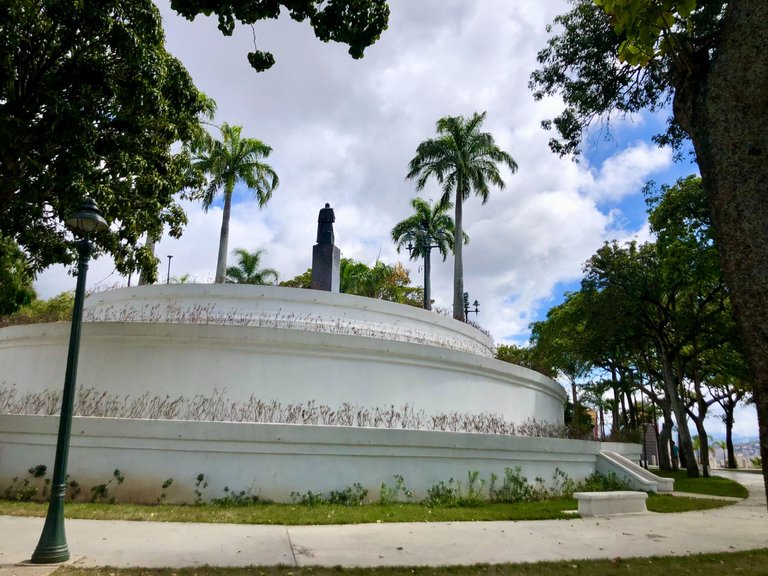
Once we left the viewpoint, we continued walking along the paths of the park up to the highest point. A place that is now known as Bolivar Square, where there is a statue of Bolivar, of course. Which, from what the guide told us, was donated to the city by the Lebanese community in the early 20th century.
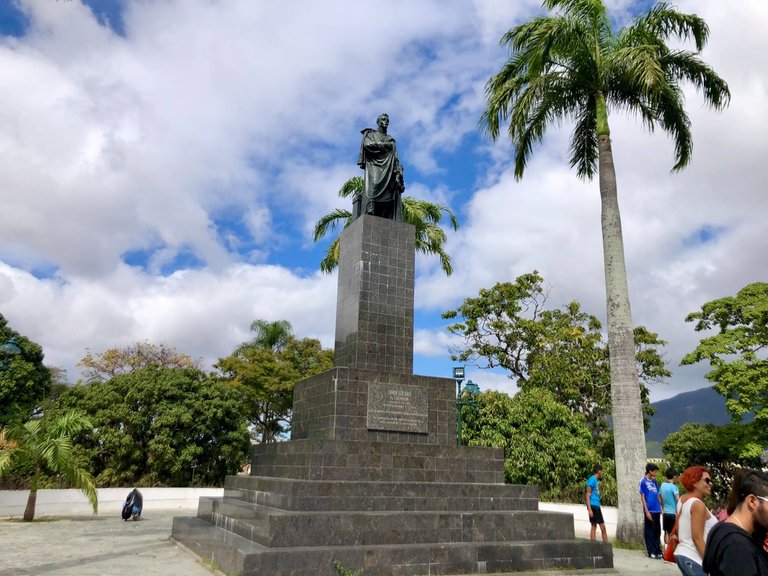
And I say it is called this way now because in this place was not always the statue of Bolívar. When the park was built, in this place was the statue of the president of the time, Antonio Guzmán Blanco. Remember I told you that when the park was created, it was called Paseo Guzmán Blanco. The statue that was in this place was popularly known as El Manganzón. When the government of Guzmán Blanco fell, a crowd knocked down the statue. Some pieces of what was left of it are preserved in some museums in the city.
The Gazebo
The next thing we visited was a Gazebo that was built in Belgium and was also not originally in the park.
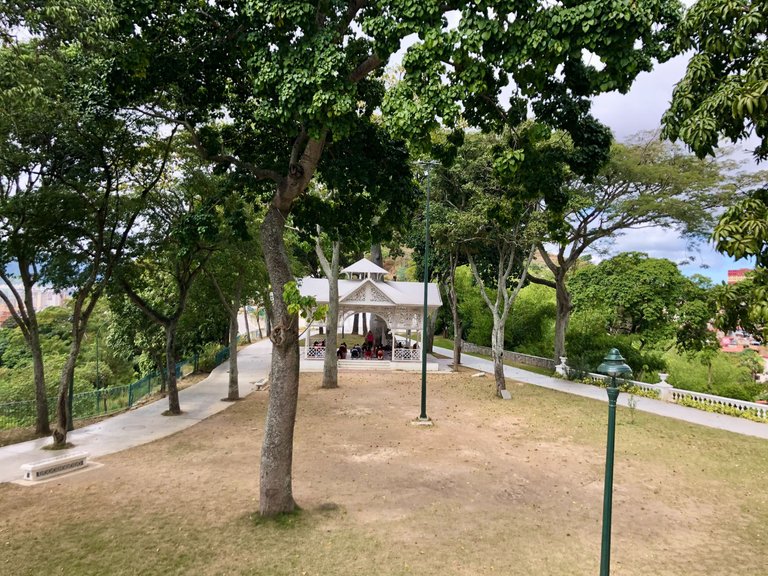
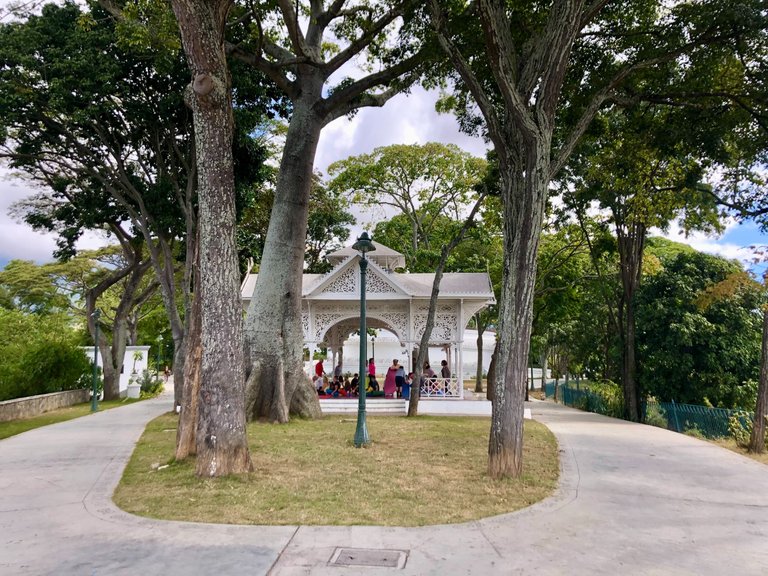
This Gazebo was at the end of the 19th century in the old Plaza de San Jacinto, which still exists today under the name of Plaza El Venezolano. The Gazebo was a flower stand that was in the square.
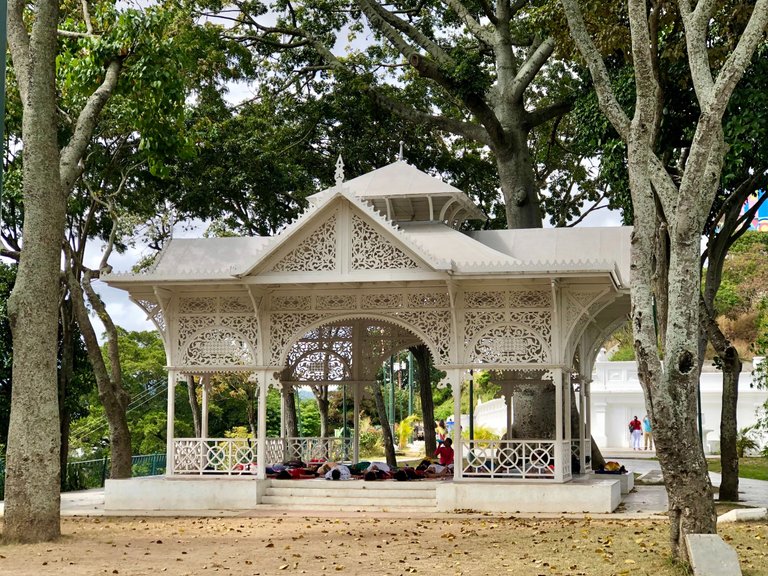
Today it is common to see groups in the park doing yoga in the Gazebo.
If you look closely at the back of the Gazebo, a white construction can be seen.
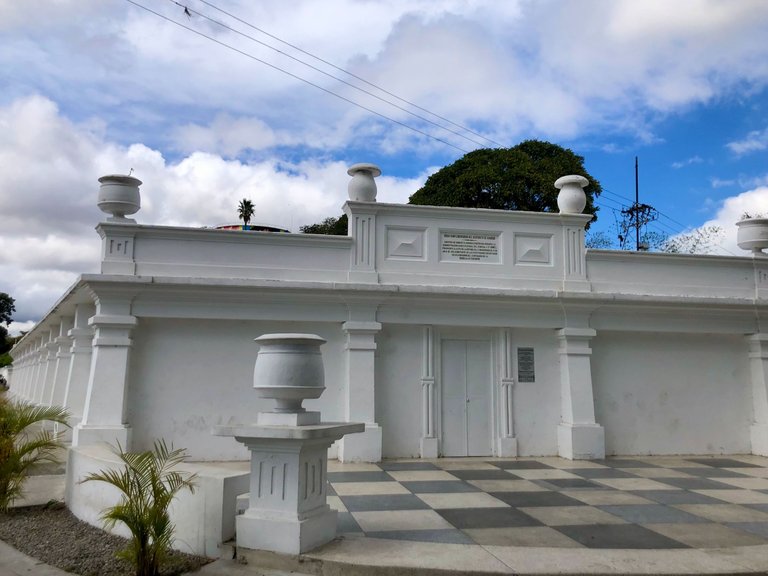
This construction is from an old aqueduct of the city, also from the Guzmán Blanco era, which is still in operation today after some renovations.
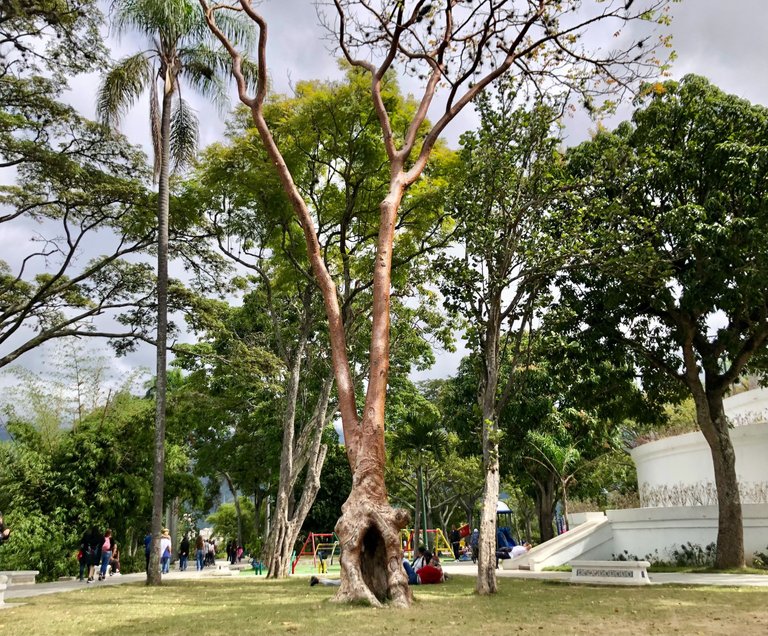
We retraced our steps to go to another side of the park and passed by this beautiful tree that I couldn't help but take a picture of.
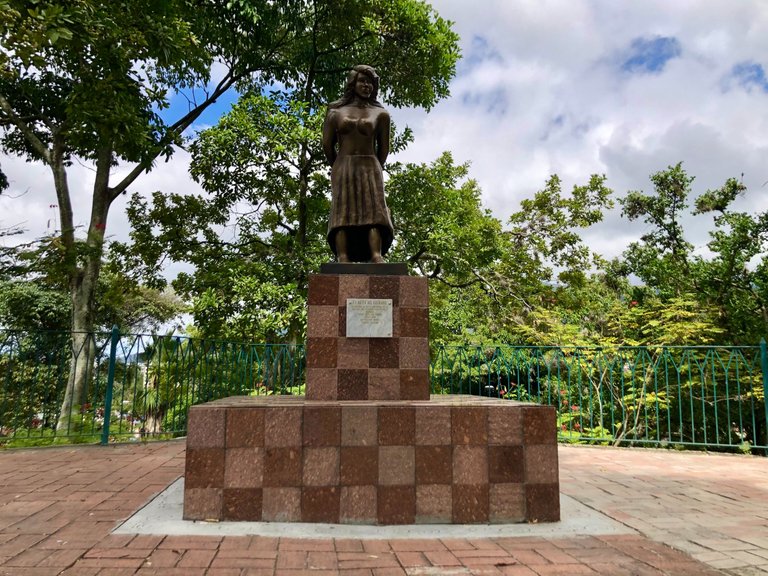
The next thing we saw was the sculpture of La Mujer del Calvario. A woman with no name. According to the guide, it represented some of the souls that roamed the park since there used to be a cemetery on these grounds before the park was built. But I couldn't find anything about the meaning of the statue.
The Chapel Nuestra Señora de Lourdes
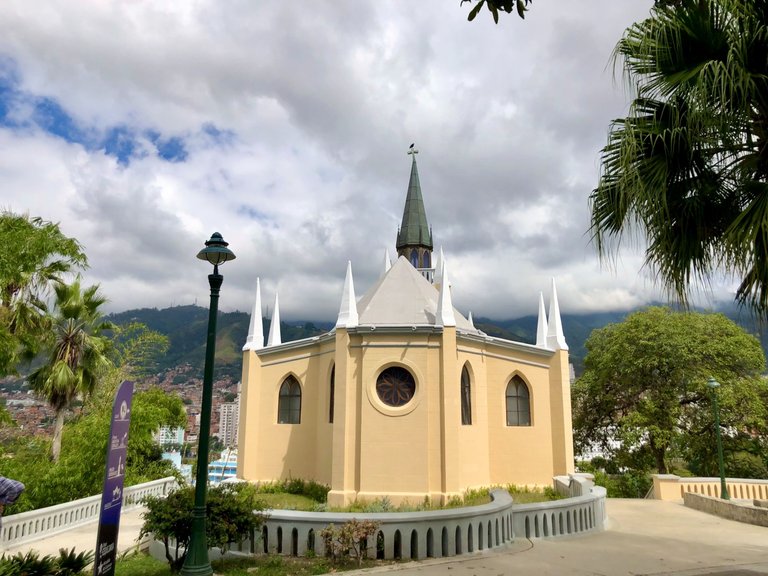
The next point of our visit was the chapel of Nuestra Señora de Lourdes.

This gothic-style chapel also dates from the end of the 19th century. It was built on the instructions of President Joaquín Crespo at the request of his wife. The chapel on top of El Calvario hill was used for religious events such as marriages and baptisms. After some tragic stories, of which I don't know how much of an urban legend they are since I couldn't find a reliable source to mention them, the chapel was abandoned. Recently, the Mayor's office has been restoring its spaces. We could not see it inside as it was closed.
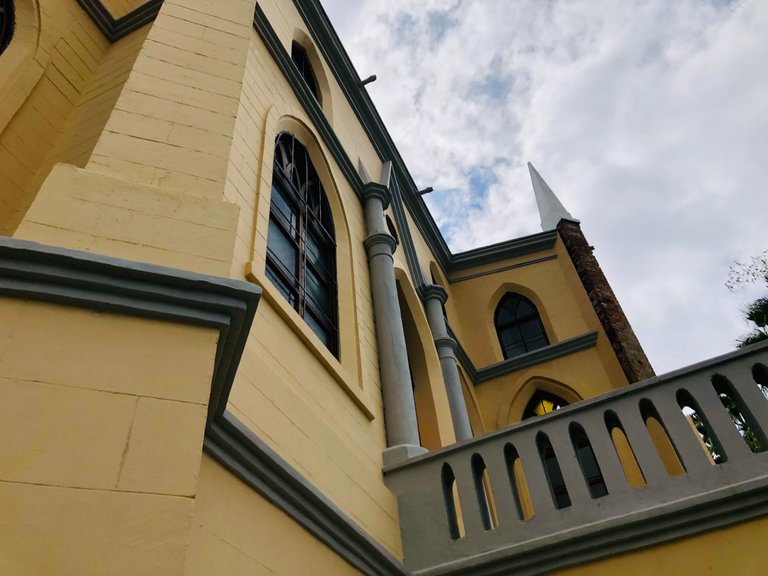
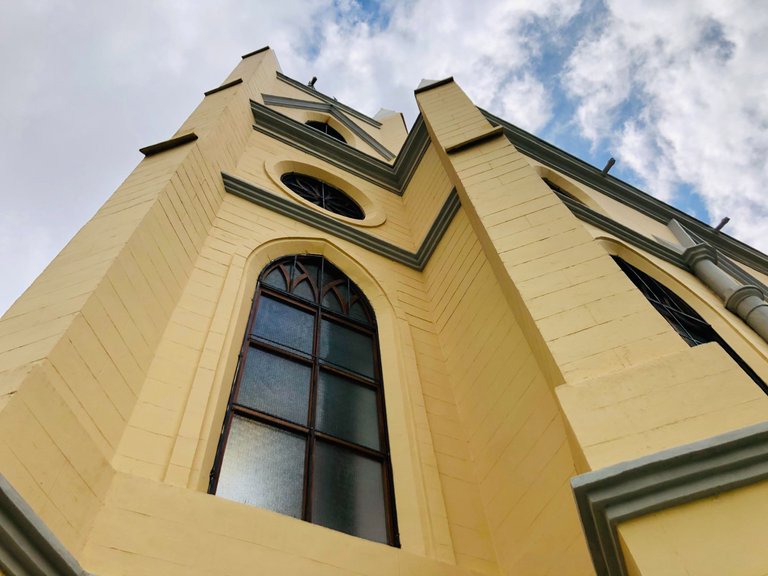
Here are some details of the chapel from the outside. It is beautiful and stands out from the surroundings.
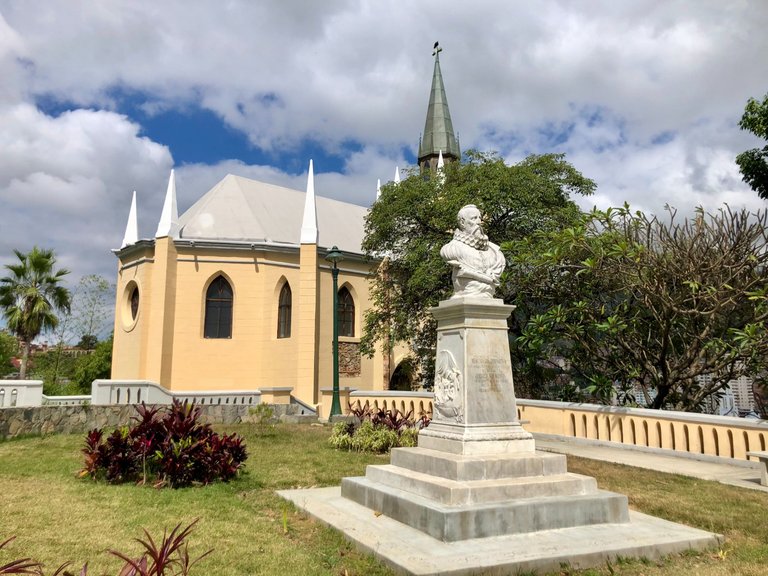
Aside from the chapel, there is a bust of Cervantes.
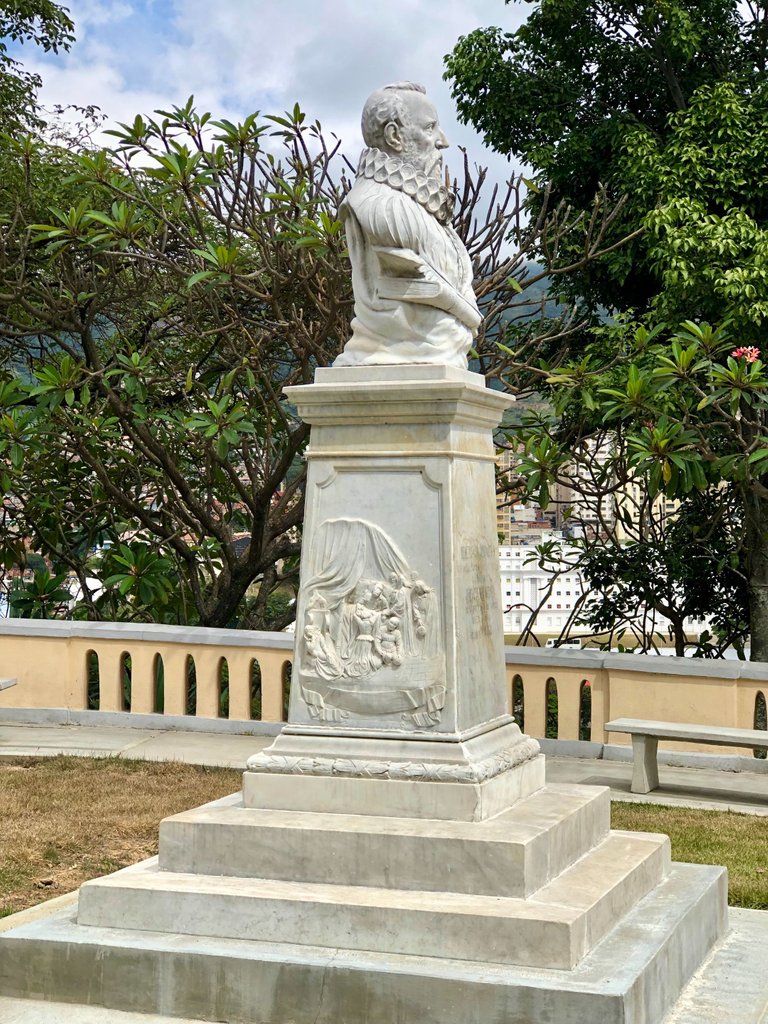
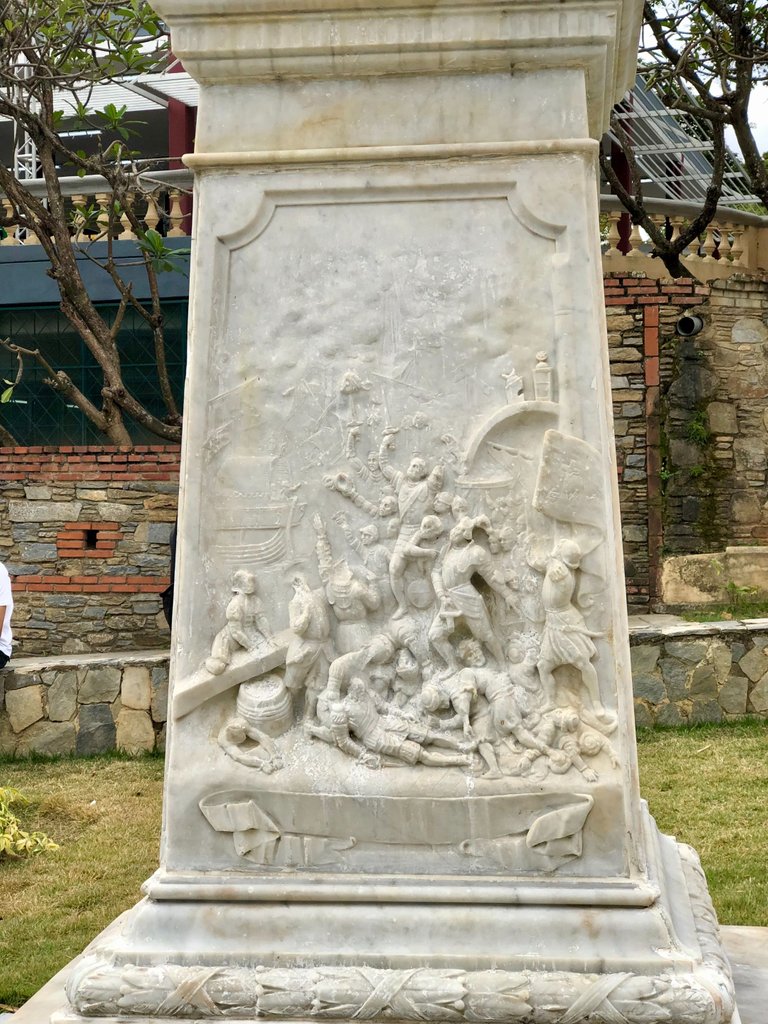
Here are some details of the marble bust of Miguel de Cervantes.
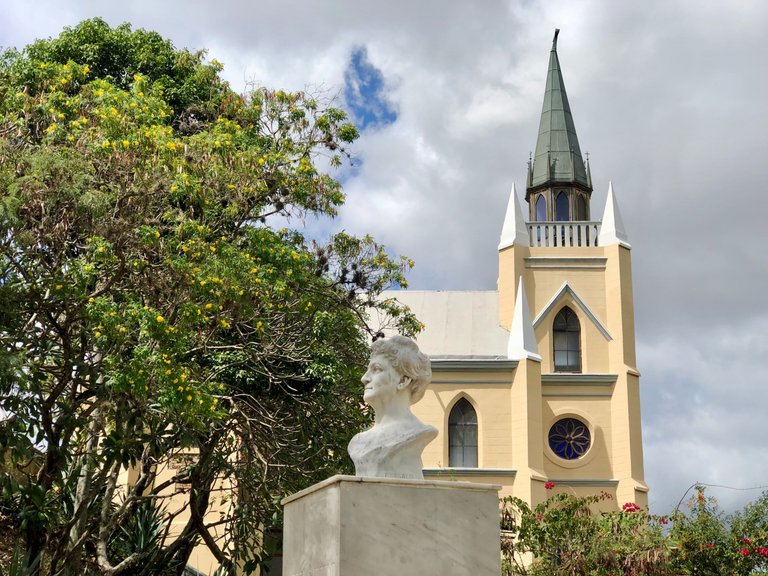
Further on, there is another bust, this time of a woman. Teresa Carreño was a Venezuelan pianist and composer who was born in the mid-nineteenth century and was also a woman with a lot of character ahead of her time. One of the most important theaters in the city is named after her.
The Arch of the Federation
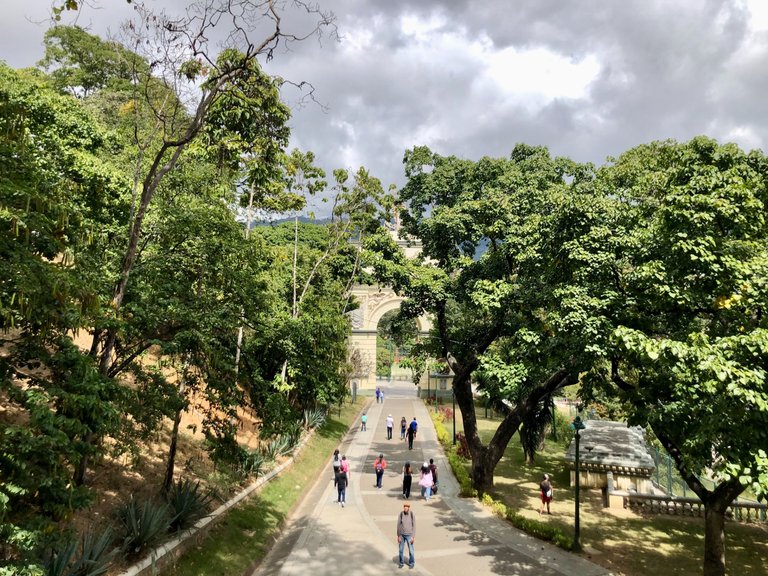
From there, we headed downhill toward the end point of the tour. And we saw it, the Arch of the Federation (El Arco de la Federación).
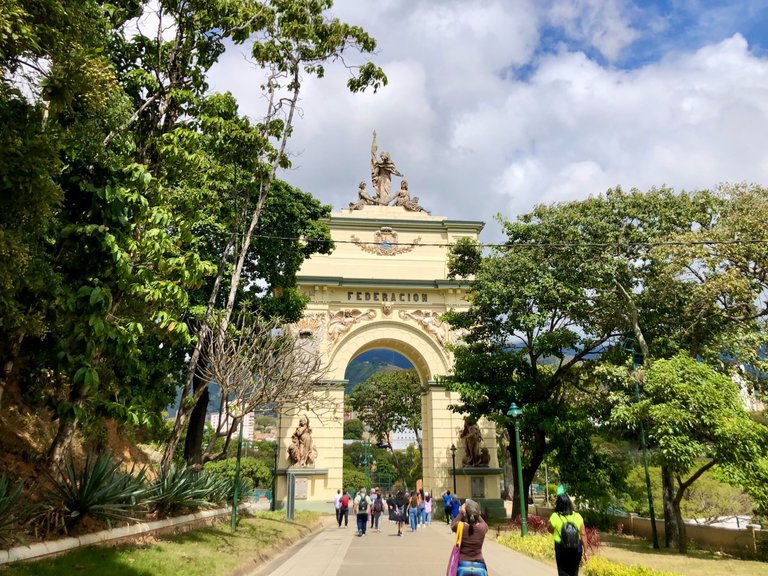
This monument, which was built in the park in the late 19th century, a few years after it was inaugurated in commemoration of the Federal War, is inspired by the Arc de Triomphe in Paris.

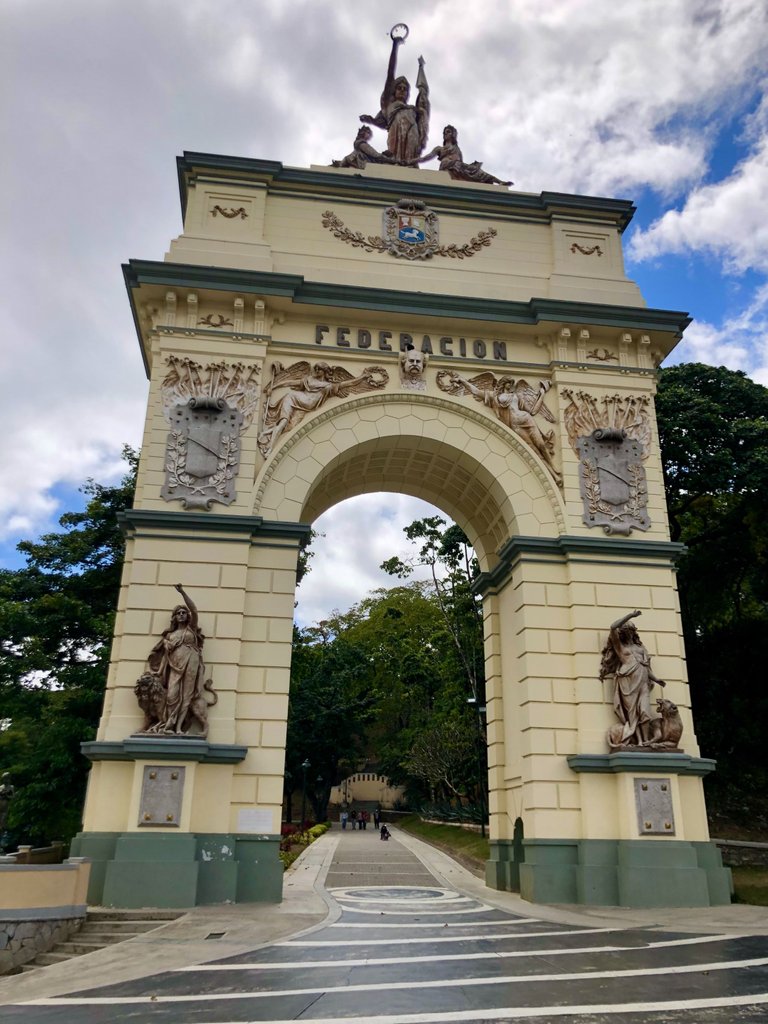
The arch is impressive and very striking.
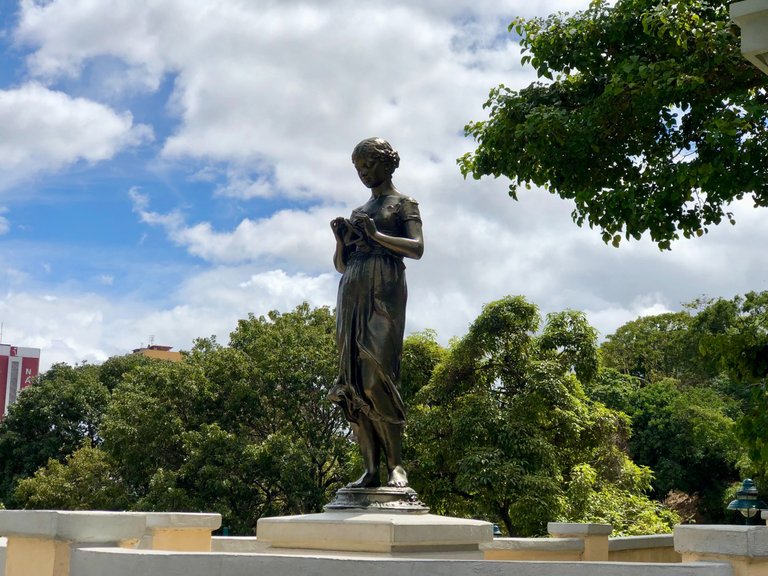
This statue is placed very close to the arch and looks like a miniature next to it. It is known as the Flower of the Alps.
There are many statues in the park. And many of them were before located in other parts of the city, according to the guide, they call them the pilgrim statues of Calvary.
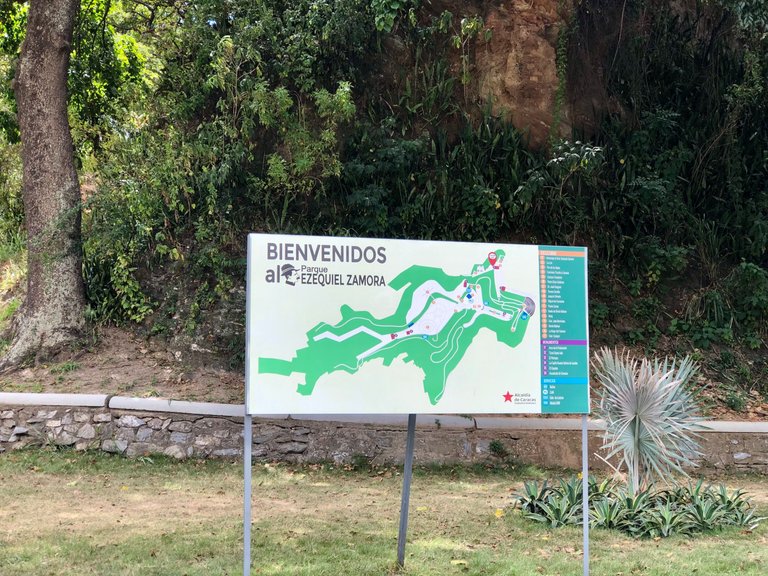
And very close to the arch, you can find this map with the location of the monuments and statues of the park that nowadays as I mentioned in the first part of my tour is called Parque Ezequiel Zamora.
And as we tend to criticize the bad things that happen in the country, we should also highlight the good things. And the fact that today El Calvario is no longer an abandoned and dangerous place is a great success for the city. The site is an invaluable heritage of the city's history, and all of us who live here should have the pleasure of visiting it.

And with this gorgeous picture of the top of the Arc, I say goodbye for today.
Thank you for reading!
If you're reading this and you are not on Hive yet, I invite you to join through my referral link. And I could delegate some Resources credit to help you get started.







